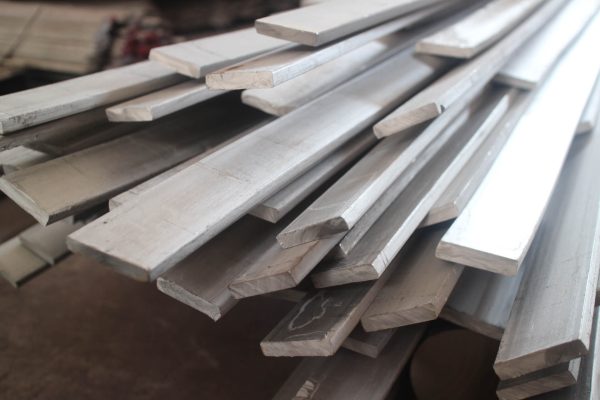Using angle bars and flat bars is quite common in construction projects. They provide flexibility and strength options for our bar line. That makes a useful base for making the right choices in any structural project.
These screws can be used for heavy-duty structural projects. Angle bars and flat bars are probably the most common conducting material. They are both essential parts of construction and manufacturing. Each could provide a unique advantage that makes it appropriate for the application.
This article will discuss the benefits of angle bars and flat bars. We will also see their proper location and best uses in the structural projects.
What Are Angle Bars?
Also known as L-shaped, angle bars are true to their name with a 90-degree angle. They can be made from steel or aluminum. They are very strong bars and suitable for many applications. They are very well-utilized in diverse construction works.
Advantages of Using Angle Bars:
Strength to Weight Ratio:
Angle bars are a comprehensive solution for lightweight, high-strength. They are, therefore, well-suited for use in various buildings, including high-rise structures, industrial facilities, and residential homes, that require strength but without the need for a lot of weight. For instance, they are commonly used to support building frames, bridges, and the upper sections of towers.
Good Support for Structural Frames:
Available at the right angle, these bars offer durable support to beams and columns. They are fantastic at helping spread weight and strengthening joints, thereby significantly enhancing the structural integrity of the building. This makes them a perfect fit for the design of frameworks.
Bending and Warping Resistance:
There is little doubt that their L-shaped appearance contributes to the fact that angle bars are excellent at resisting bending and warping. Pending structures are placed in more rigorous areas. This elongates its life and decreases maintenance costs.
Versatility in Applications:
Provide a wide range of applications for angle bars. You can spot them inside furniture, shelves, and even truck beds. The car, shipbuilding, and automotive industries extensively employ them.
Cost-Effective Option:
Angle bars are generally much cheaper than other kinds of structural materials. They are just as durable and strong but come at a lower cost. This makes them a great choice for most simple projects.
What Are Flat Bars?
Flat bars are also sections of cold-rolled steel with a flat, rectangular, or square shape. The door sills are also made of steel, aluminum, or a different metal. The flat bar is more popular in construction due to its multiple applications and easy usage.
Advantages of Using Flat Bars:
Easy to Work With:
The flat bars have no problem with shaping, cutting, and welding. They are simple in structure, implying they can also easily employ smaller-scale works. This flexibility is beneficial in DIY projects and professional endeavors.
Durable and Reliable:
This improves both its durability and the flat bar stature. They are immune to wear and tear. This makes them perfect for applications that need durable materials.
Wide Range of Applications:
Flat bars are used in all sorts of applications. These are widely used in construction, machinery & automotive components. It is also used for fences, gates, and decorations.
Ideal for Customization:
Because flat bars are relatively simplistic in shape, they can be modified to suit your exact needs. These can be molded according to the specific needs. This is particularly useful in projects that need more elaborate dimensions or planned shapes.
Strong Load-Bearing Capacity:
Flat bars have great tension and compression resistance. They come equipped with structural supports, frames, and brackets. So, it is also a good choice for both large and small-scale projects.
Comparing Angle Bars and Flat Bars:
Now that we know their respective benefits, we may compare them. Both -angle bars and flat bars come with interesting advantages. The applications of both might be different depending on the project.
Strength and Stability:
- Angel bar: Angle Bars give good support and rigidity. These are common in frameworks and heartier structures. They are L-shaped and highly resistant to bending and torsion — essentially not unlike a bridge design.
- Flat bar: Flat Bars are also very strong and are commonly used in applications where tension, a force that pulls materials apart, is a concern. Because of their flat, wide support, they are perfect for items with little contact.
Ease of Use and Flexibility:
- Angel bar: Because of their flat nature, Flat Bars are simple to cut and weld in addition to easier formability. They are fit for customization projects.
- Flat bar: While more versatile, they can also be difficult to cut and weld. On the other hand, their different shape enables them to be perfect for some structural uses.
Cost and Availability:
- Angel bar: Moreover, angle bars are usually cheaper for heavy-duty applications. They offer durability at a reasonable price.
- Flat bar: Flat Bars are also very affordable and easily available. These will be versatile and can create various structural elements on metal surfaces.
Choosing the Right Bar for Your Project:
The needs of your project will determine whether to use flat bars or angle bars. To start, consider a few of the following:
- Assess the Load Requirements: Angel bars are a good choice if your project requires high-strength aisle bars. They can handle weight and are resistant to bending as well.
- Flexibility in Customization: Flat bars are the least versatile, but some projects may require specific dimensions or shapes, and you will need that flexibility. The benefits of these are they can be cut and bent easily.
- Evaluate the Cost: Regarding cost, both angle and flat bars are cost-effective options. The key is to consider which type best meets your project’s needs at the lowest cost, honestly assessing your requirements.
Some of the most common uses of both (in a nutshell):
Angel Bars:
- Building projects
- Bridges
- Shelves
- Truck beds
- Towers and other heavy machinery
Flat Bars:
- Frames
- Brackets
- Fences
- Gates
- Supports
Conclusion:
Angle and flat bars are necessary for most construction and manufacturing work. However, with their advantages over each other, both are perfect for different use cases. Because they can give force and stability, they make the ideal reinforcement for heavy-duty work. But flat bars are easy to work with and flexible. Great for those projects where design has to be just so.
So start choosing the right one for your structural projects by knowing the advantages of both. When selecting between angle and flat bars, consider your project’s requirements.
Also Read:- Essentials Clothing: The Foundation of Your Wardrobe




